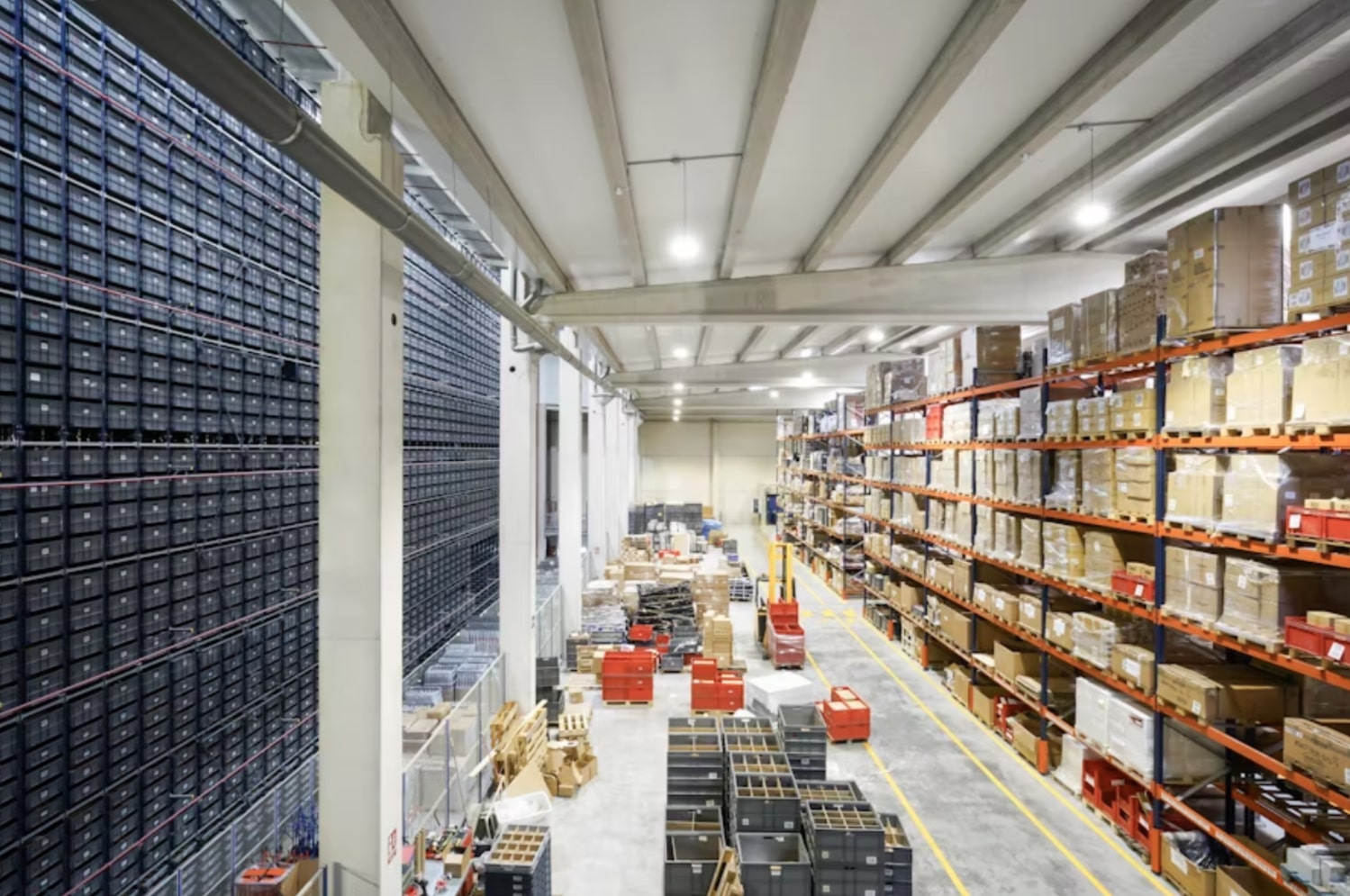
As a warehouse manager, I’ve spent countless hours overseeing not only the movement of goods and materials but also the broader infrastructure that supports our operations. One of the most critical aspects of running an efficient, compliant, and financially sound operation is managing the company’s fixed assets. These assets, ranging from machinery and vehicles to office furniture, IT equipment, and building structures, are the backbone of our organization. They are not intended for resale but are essential for daily production, administration, and operational functions. Proper identification, tracking, and management of these assets through a thorough Fixed Asset inventory is fundamental for accurate financial reporting, regulatory compliance, and optimal resource utilization.
Understanding Fixed Assets
Fixed assets are long-term, tangible items that a company uses in its business operations to generate value over time. Unlike inventory intended for resale, fixed assets are used internally, whether in producing goods, delivering services, or supporting administrative tasks. For a warehouse manager, this includes everything from forklifts and conveyor systems to shelving units, computers, and office furnishings. Each asset represents an investment, and each carries a cost, depreciation schedule, and maintenance requirement.
One of the first lessons I learned in my role was that overlooking or mismanaging fixed assets can have significant consequences. Inaccurate records can lead to overstatement or understatement of asset value in financial statements, impacting everything from tax filings to investor relations. Furthermore, ineffective tracking can result in lost or underutilized equipment, leading to unnecessary expenses and operational inefficiencies.
The Importance of a Fixed Asset Inventory
Conducting a Fixed Asset inventory is not merely a clerical exercise, it is a strategic activity. A comprehensive inventory ensures that all assets are accounted for, properly valued, and in good condition. It provides a foundation for several critical organizational processes:
- Accurate Financial Reporting: Fixed assets are listed on the balance sheet and depreciated over time according to accounting standards. A thorough inventory ensures that the values recorded reflect reality, avoiding discrepancies that could mislead stakeholders or result in regulatory scrutiny.
- Regulatory Compliance: Many industries are subject to strict reporting requirements. Inaccurate or incomplete asset records can lead to fines, penalties, or even legal liability. Maintaining an up-to-date Fixed Asset inventory demonstrates diligence and compliance.
- Optimized Asset Utilization: Knowing what assets exist, where they are located, and their condition allows warehouse and operations managers to deploy resources efficiently. For example, an underutilized forklift can be reassigned to a high-demand area instead of purchasing a new one.
- Strategic Planning and Budgeting: A Fixed Asset inventory provides management with the information needed for capital expenditure planning. Understanding asset lifespan, maintenance costs, and replacement schedules enables more accurate budgeting and resource allocation.
- Risk Management: Properly documented assets reduce risk of theft, loss, or damage. They also support insurance claims and disaster recovery planning by providing a clear record of owned resources.
Components of a Fixed Asset Inventory
From my experience, a successful Fixed Asset inventory involves far more than simply checking items off a list. It demands a careful, systematic approach that thoroughly documents and tracks each asset. This process not only ensures accuracy but also provides valuable insights for management, maintenance planning, and financial reporting. The key components of an effective inventory include:
1. Asset Identification
Each asset should be uniquely identified using a tagging or labeling system. Barcodes, RFID tags, or QR codes are common methods for assigning identification numbers that can be scanned and tracked in real time. This identification process ensures that assets are easily distinguishable, reducing the risk of duplicate records or untracked items.
2. Detailed Asset Information
For each asset, it is essential to record a range of specific details to ensure accurate tracking and management. This includes a clear description of the item, such as “Toyota 3-Ton Forklift, Model XYZ,” which helps identify it precisely. The serial or model number is also recorded to verify the exact make and ensure proper warranty or service coverage. Knowing the physical location of each asset is critical for retrieval, maintenance, and audit purposes. Additionally, the acquisition date and cost are documented to provide context for depreciation schedules and accurate financial reporting. Assessing the condition of each asset helps plan for maintenance or potential replacement, while recording the depreciation method, whether straight-line, declining balance, or another approach, ensures proper accounting and compliance with reporting standards.
3. Verification and Inspection
Physical verification is a critical part of managing fixed assets. This involves walking through the warehouse, offices, and other facilities to confirm that each asset exists and is in good condition. During this process, I carefully look for signs of damage or excessive wear, check for assets that may be missing or misplaced, and identify items that are underutilized or idle. By conducting these inspections on a regular basis, I am able to flag maintenance issues early, prevent unexpected downtime, and ensure that assets are allocated efficiently throughout the organization.
4. Asset Tracking and Maintenance Records
Tracking assets over time is just as important as identifying them. Maintenance logs, service records, and usage history should be integrated with the inventory. For machinery and vehicles, this is particularly critical, as regular servicing ensures operational efficiency and prolongs lifespan. Additionally, tracking usage patterns can highlight inefficiencies, such as over-reliance on certain equipment or underutilization of other resources.
Implementing a Fixed Asset Inventory: Step by Step
From the initial planning stages to final execution, conducting a Fixed Asset inventory requires careful attention and a structured approach. Each phase is important to ensure accuracy, efficiency, and completeness. Over the years, I have developed a methodical process in my warehouse that allows me to account for every asset, maintain reliable records, and streamline ongoing management. Here is how I approach a Fixed Asset inventory step by step in my facility:
Step 1: Planning and Preparation
Before beginning a Fixed Asset inventory, it is essential to clearly define the scope of the project. This involves determining which assets will be included, establishing the objectives of the inventory, and assigning responsibilities to the appropriate team members. In our warehouse, I develop a detailed project plan that outlines the departments or areas to be inventoried, sets the timeline and key milestones, identifies the personnel responsible for counting and verification, and specifies the tools and software required to ensure accurate and efficient tracking.
Step 2: Asset Tagging and Identification
Next, I make sure that every asset in the warehouse has a unique identification tag. For newly acquired items, tagging is done immediately upon arrival, ensuring they are tracked from the very beginning. Existing assets are carefully reviewed, and any items that are missing tags or have unclear identification are updated accordingly. This process not only eliminates confusion during audits but also provides consistency in tracking, making it easier to locate, manage, and maintain each asset. Proper tagging also supports accurate record-keeping, helps prevent duplication or loss, and simplifies reporting for both operational and financial purposes.
Step 3: Physical Count and Verification
With the team, I perform a systematic physical count, moving through designated areas and inspecting each asset. Using handheld scanners or mobile apps linked to our asset management software, we record asset details and verify conditions. Any discrepancies between recorded data and actual observations are flagged for investigation.
Step 4: Data Entry and Reconciliation
After the physical count, all information is entered into the asset management system. Reconciliation involves comparing existing records with the newly collected data, correcting errors, and updating asset values or locations. This ensures that the inventory is accurate and reflects the true state of assets.
Step 5: Reporting and Analysis
Once the inventory is complete, I generate reports for management. These reports provide insights into asset utilization, condition, and upcoming replacement needs. For example, if several forklifts are nearing the end of their useful life, we can plan for phased replacement in the next budget cycle. Analysis also helps identify redundant or underutilized assets that could be sold, relocated, or repurposed.
Step 6: Continuous Monitoring and Updates
A Fixed Asset inventory is not a one-time task. Assets are constantly moving, aging, and being replaced. Continuous monitoring and periodic audits—quarterly or annually—ensure the system remains up to date. In our warehouse, we integrate real-time tracking and maintenance logs to keep our asset records accurate between full audits.
Challenges in Fixed Asset Management
Managing fixed assets comes with its fair share of challenges. One common issue I encounter is discrepancies in records. Assets are sometimes moved or reassigned without proper documentation, which can create gaps in tracking and complicate audits. To address this, regular audits combined with thorough staff training are essential to maintaining accurate records.
Depreciation calculations present another challenge. Applying the correct method for each asset can be complex, particularly when items are upgraded, partially disposed of, or used in multiple areas of the business. Without careful attention, errors in depreciation can affect financial reporting and budgeting. Additionally, high-value assets such as machinery or electronics can be lost or misplaced if they are not properly tagged and monitored. This highlights the importance of a robust identification and tracking system.
Coordinating maintenance for multiple assets is also demanding. Ensuring that each piece of equipment or vehicle receives timely servicing requires detailed scheduling and oversight. Despite these obstacles, the advantages of a well-maintained Fixed Asset inventory far outweigh the difficulties. Accurate records, optimized asset usage, and proactive maintenance not only save time and money but also reduce operational headaches, contributing to smoother and more efficient warehouse operations.
Benefits Beyond Compliance
While financial reporting and regulatory compliance are major drivers of Fixed Asset inventory, there are other benefits that often go underappreciated:
- Enhanced Operational Efficiency: Knowing exactly what assets are available and their condition allows for better workflow planning. For instance, I can allocate machinery to high-demand areas and avoid bottlenecks.
- Informed Capital Planning: Clear insights into asset age, condition, and utilization help management make smarter decisions about future investments.
- Insurance and Risk Management: In the event of a disaster, theft, or damage, having a detailed asset record speeds up insurance claims and recovery processes.
- Employee Accountability: Assigning responsibility for specific assets encourages employees to care for them properly, reducing misuse and loss.
Technology and Tools for Asset Management
In today’s warehouse environment, technology is essential for effective Fixed Asset management. Tools such as asset management software, barcode scanners, RFID systems, and cloud-based platforms enable real-time tracking and reporting of assets. In our warehouse, we use a combination of these technologies to automatically update inventory records whenever assets are moved or maintained. They also help us monitor depreciation schedules, schedule preventive maintenance, and generate compliance and audit reports with greater accuracy. By investing in these technological solutions, we reduce human error, improve overall efficiency, and provide management with actionable insights that support better decision-making and streamlined operations.
Conclusion
From my perspective as a warehouse manager, a Fixed Asset inventory is far more than an accounting requirement, it is a strategic tool that underpins operational success. By accurately identifying, tracking, and maintaining assets, organizations can ensure compliance, optimize resource utilization, and support informed decision-making. While the process requires careful planning, attention to detail, and ongoing monitoring, the benefits, ranging from improved efficiency to better financial reporting, are invaluable.
Ultimately, managing fixed assets is about stewardship. Every piece of equipment, every vehicle, every piece of furniture represents a significant investment. Maintaining an accurate inventory ensures these investments deliver maximum value, supporting the organization’s goals and providing a foundation for sustainable growth. In the complex environment of warehouse operations, this level of control and insight is not just helpful, it’s essential.




